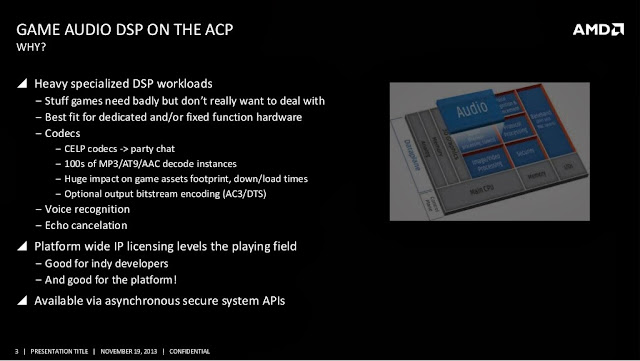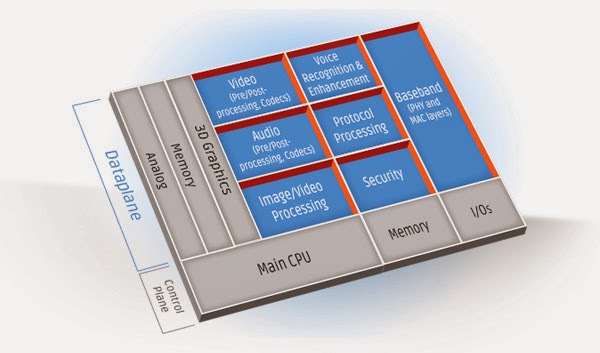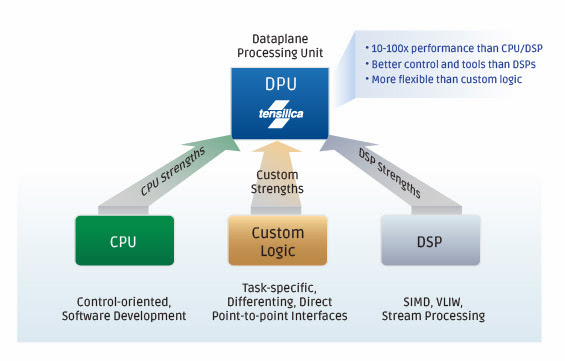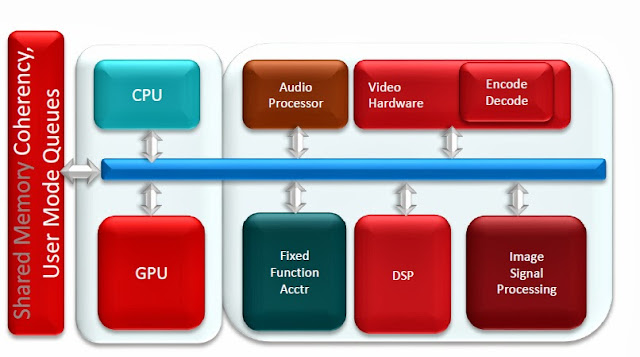Tensilica IP Overview
If your SoC design demands a highly efficient, programmable computational engine for a data-intensive task, you've come to the right place. The Tensilica® dataplane processing units (DPUs) combine the strength of CPUs, digital signal processors (DSPs), and custom logic with 10X to 100X the performance.
DPUs can handle BOTH performance-intensive DSP (audio, video, imaging, and baseband signal processing) and embedded RISC CPU processing functions (security, networking, and deeply embedded control).
The Tensilica processor architecture was designed, from the very start, to be easily modified to meet the demands of dataplane processing.
For some of the most common and broadly applicable tasks in the dataplane, we have ready-made solutions like our HiFi audio, voice, and speech DSPs, our ConnX communications DSPs, our IVP for imaging and video processing, and our Diamond Standard controllers for deeply embedded dataplane control.
For more specialized tasks, you can rapidly build your own customized DPU for tasks like image signal processing, video processing, security protocol processing, or network packet processing using our patented automated tools. The tools generate a complete matching software tool set, models, EDA scripts - everything you need to get into production quickly, at a fraction of the time it would take to design the function in RTL.




